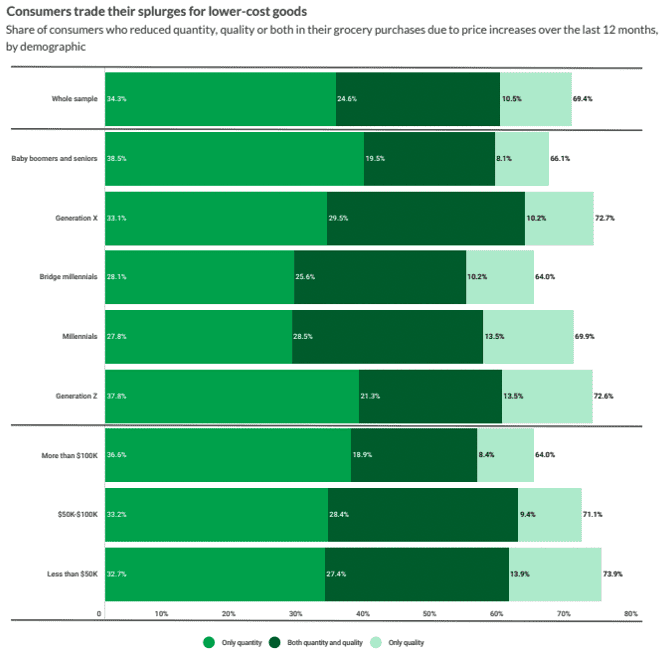
Americans have spent a year cutting costs, and groceries are where much of the scrimping has been focused.
The PYMNTS study “Consumer Inflation Sentiment: Perception Is Reality,” the sixth in this series, looked at how various demographic groups are approaching inflation control in recent months as we enter a new year with prices still in the clouds and budgets stretched to the limit.

A survey of 2,140 U.S. consumers conducted in December revealed that inflation has forced changes to 69% of consumers’ shopping lists, with people often trading quality for quantity, and in some cases both, as they try to afford the basics of living.
“Among grocery shoppers who say they have noticed price changes, 59% have cut down on nonessential grocery items, while 35% are buying cheaper alternatives,” the study stated. “Only 11% of consumers simply switched to lower-quality items; over three times that share (34%) purchased fewer items but kept quality unchanged.”
The generation trading down to lower quality goods in the highest numbers is the millennials, at 42%. Compare that to the 28% of baby boomers and seniors who did the same.
However, it’s Generation X that’s most likely to be cutting back in both areas, with nearly 72.7% of this cohort backing off both quality of goods and quantity purchased. It is not entirely clear why this might be, but it could be related to the fact that Gen X is in a stage of life where they are saving for retirement and working to pay off their children’s educational expenses, leaving less disposable income available for favored brands in preferred quantities.
“Families with children were the most likely to switch to lower quality grocery items: Forty-one percent of families with kids have done this, compared to 29% of couples without children,” the study found. “Families with children were the most likely to reduce both the size and quality of their shopping carts, at 29%, versus single consumers with children, at 20%.”